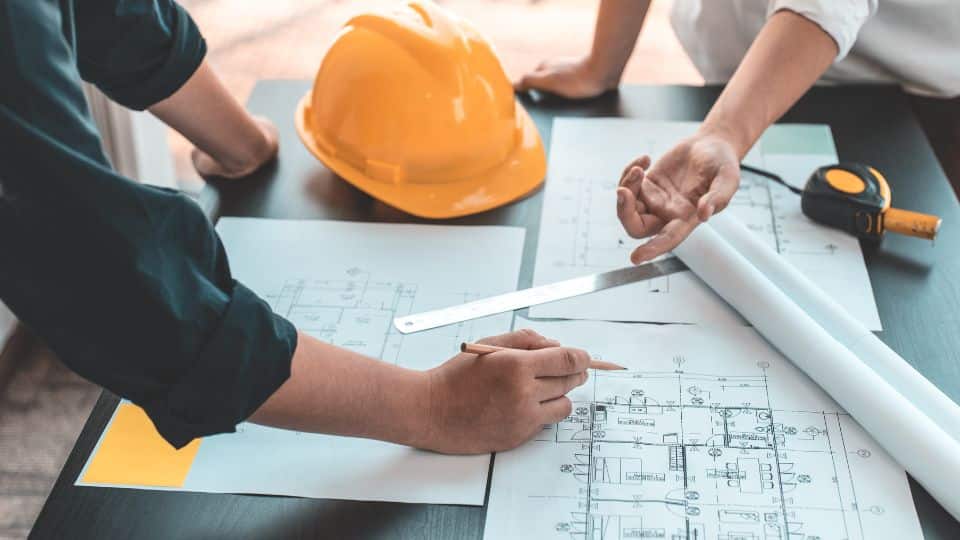Architect Career Path: Skills, Education, and Advancement Guide
Architect Career Path: Skills, Education, and Advancement Guide
Blog Article
Comprehending the Diverse Profession Paths Available for Aspiring Architect
As an ambitious Architect, you have a world of profession paths waiting on you. Each path supplies unique difficulties and possibilities to use your creativity and technical know-how. Whether you're drawn to conventional style or the subtleties of sustainable style, there's a specific niche that lines up with your interests. Recognizing these varied alternatives can shape your expert trip, yet which direction will you pick to explore initially?
Conventional Style: Creating Structures and Structures
Traditional design focuses on creating structures and structures that blend performance with aesthetic allure. Your designs can reflect cultural heritage, showcasing regional practices while fulfilling modern requirements.
You'll create skills in preparing, model-making, and site analysis, allowing you to visualize and interact your concepts properly. Involving with customers, you'll need to recognize their vision and translate it right into possible layouts.
Moreover, constructing codes and sustainability techniques are vital in your work, ensuring your structures are eco friendly and secure. As you grow in your occupation, you'll discover chances in residential, commercial, and even remediation projects, each offering special obstacles. Embracing traditional style paves the way for a satisfying job that admires the past while forming the future.
Urban Planning: Shaping Areas and Public Spaces
As an aspiring Architect, you can play a crucial function as a metropolitan organizer, transforming how areas engage and work. By employing area involvement strategies, you'll guarantee that homeowners have a voice in forming their atmosphere. And also, integrating lasting layout concepts will certainly help create spaces that not only meet today's demands but likewise shield the future.
Function of Urban Planners
While lots of could believe of engineers as the sole dreamers behind buildings, metropolitan coordinators play a crucial role in forming the broader landscape of neighborhoods and public rooms. By collaborating with numerous stakeholders, you'll help create parks, transportation systems, and property areas that promote social communication and ease of access. Your expertise in spatial design and neighborhood characteristics permits you to picture future growth while preserving social heritage.
Community Involvement Approaches
Reliable neighborhood interaction approaches are crucial for urban organizers to ensure that the voices of residents are heard and valued in the planning procedure. To foster meaningful dialogue, you should prioritize open discussion forums and workshops where neighborhood participants can express their ideas and worries. By proactively listening and including feedback, you'll develop areas that mirror the community's needs, eventually leading to even more successful and lasting urban environments.
Sustainable Style Principles
When developing urban areas, incorporating lasting style principles is essential for producing environments that thrive both ecologically and socially. You ought to start by concentrating on energy performance, making use of materials that minimize waste and advertise recycling. Consider integrating eco-friendly areas, like parks and gardens, to boost biodiversity and boost air top quality. Advertising walkability and public transportation can decrease reliance on cars and trucks, cultivating a much healthier area.
Creating with water conservation in mind is also essential-- think of rainfall yards and permeable surfaces to manage stormwater. Entailing neighborhood members throughout the planning procedure guarantees that the rooms you create fulfill their demands and motivate social communication. By embracing these principles, you'll add to vibrant, sustainable city landscapes that benefit everyone.

Landscape Style: Producing Sustainable Outdoor Atmospheres
As you check out landscape design, you'll discover essential layout concepts that develop useful and beautiful outside areas. Sustainable techniques play an important duty in making sure these environments flourish while reducing environmental impact. And also, you'll find a variety of occupation possibilities that permit you to make a real distinction in just how individuals interact with nature.
Layout Principles in Landscape
Recognizing style principles in landscape style is important for producing lasting outside settings that harmonize with nature. You'll require to consider components like equilibrium, scale, and percentage to assure your styles feel natural and welcoming. In addition, pay interest to seasonal changes, developing with products that match the environments year-round.
Sustainable Practices Review
Sustainable practices in landscape architecture not just concentrate on aesthetic appeals yet additionally prioritize environmental health and source preservation. You can create areas that promote soil health and wellness, such as exercising and making use of natural materials permaculture concepts. Eventually, these techniques assure your designs benefit both individuals and the atmosphere for years to come.
Job Opportunities Expedition
With a strong structure in sustainable techniques, landscape style supplies a selection of occupation paths that allow you to make a meaningful effect on the setting. You might function as a landscape developer, producing cosmetically pleasing and useful exterior areas, or concentrate on ecological reconstruction, helping to revitalize broken environments. Urban organizers frequently collaborate with landscape engineers to develop environment-friendly rooms in urban settings, improving city livability. If you're enthusiastic regarding education, consider becoming a landscape design teacher, motivating future generations. In addition, you could collaborate with nonprofits concentrated on environmental sustainability or engage in research to innovate new methods. Each path not just forms gorgeous settings but also cultivates a healthier earth for future generations.
Sustainable Layout: Concentrating On Eco-Friendly Practices
As you discover your job in style, accepting environment-friendly methods can establish you apart in a competitive field. Sustainable design focuses on producing structures that lessen environmental influence while improving passenger health. By including renewable materials, energy-efficient systems, and lasting structure techniques, you'll add to a greener future.
Begin by acquiring expertise of green accreditations like LEED or BREEAM, which can bolster your credentials. Consider how natural light, ventilation, and thermal performance can optimize style. Team up with designers and environmental specialists to introduce services that reduce waste and preserve sources.
Don't fail to remember the importance of neighborhood involvement-- appealing neighborhood stakeholders can inspire styles that balance with the setting. As clients progressively prioritize sustainability, your know-how in environment-friendly methods will certainly not just draw in jobs but additionally meet your interest for liable architecture. Accept this crucial facet of the profession, and see your profession grow.
Historical Preservation: Securing and Restoring Cultural Heritage
While you commence on your building journey, take into consideration the vital duty of historical conservation in preserving our cultural heritage. This field focuses on the security and repair of substantial buildings, sites, and frameworks that tell the tales of our past. By involving in historic preservation, you'll help safeguard the architectural tradition that forms community identity.
As a historical conservation Architect, you'll examine historic importance and assess the problem of frameworks. You'll work carefully with conservationists and historians to guarantee genuine restoration strategies are employed. This profession course enables you to blend imagination with study, allowing you to develop services that appreciate original materials and workmanship.
Your work not only adds to sustainability by recycling existing structures however additionally cultivates a sense of pride within communities. Accepting this course will assist you end up being a guardian of history, maintaining the stories and appearances that enhance our lives.
Interior Style: Enhancing Indoor Spaces
Historical preservation and interior design both share a dedication to enhancing the developed setting, but they concentrate on various facets. While historical conservation highlights keeping a structure's historical and cultural value, indoor architecture zeroes in on optimizing interior areas for performance and appearances.
As an aspiring Architect, you'll my blog discover that indoor architecture permits you to mix creative view publisher site thinking with technological abilities. You'll develop spaces that not only look excellent yet additionally advertise comfort and performance. This area includes understanding just how light, shade, and materials interact within a space, affecting state of mind and functionality.
You'll service different tasks, from domestic homes to industrial offices, making certain that each atmosphere fulfills the needs of its passengers. By prioritizing user experience, you can transform interiors into useful and motivating spaces, making a substantial effect on exactly how people connect with their surroundings. Welcome the opportunity to boost interior environments and form the method individuals live and work.
Industrial Style: Merging Performance With Looks
Industrial style plays a crucial function in developing items that effortlessly mix appearances with functionality, ensuring that what you make use of day-to-day is not just visually enticing but also functional. As an aspiring Architect, you could immerse on your own in this area, concentrating on developing whatever from furniture to consumer electronics. Your job includes understanding customer requirements, materials, and manufacturing procedures, enabling you to develop ingenious solutions that enhance daily experiences.
In commercial design, you'll usually collaborate with suppliers, engineers, and marketers, guaranteeing that your designs are not only stunning but also practical. You'll find out to stabilize kind and function, focusing on use without giving up design. By sharpening your abilities in sketching, 3D modeling, and prototyping, you'll be well-equipped to bring your concepts to life. This career course uses a vibrant setting where creative thinking meets practicality, making it a fulfilling choice for designers thinking about shaping the products of tomorrow.
Frequently Asked Inquiries
What Educational Credentials Do I Required to Become an Architect?
To come to be an architect, you'll need a specialist level in style, typically a Bachelor's or Master's. Furthermore, you'll need to finish a teaching fellowship and pass the Architect Registration Exam to practice legally.
Are There Accreditation Requirements for Various Building Profession Paths?
Yes, there're qualification needs for different architectural courses. Architect. You'll require to pass exams, total internships, and in some cases pursue specialized training, depending on your selected focus, like landscape style, city layout, or historical preservation
What Software Application Skills Are Important for Engineers Today?

How Can I Gain Practical Experience While Researching Architecture?
You can get functional experience by interning at architectural companies, taking part in layout competitions, volunteering for area projects, or teaming up with schoolmates on real-world tasks. These possibilities enhance your abilities and construct important connections in the sector.
What Task Opportunities Exist Outside Traditional Style Firms?
You can check out different job opportunities outside conventional style companies, like city planning, interior design, landscape style, building management, property advancement, and even duties in sustainability consulting. Each offers special obstacles and benefits.
Whether you're read more drawn to typical architecture or the nuances of sustainable layout, there's a niche that aligns with your interests.When designing urban areas, incorporating sustainable design principles is critical for creating settings that thrive both environmentally and socially.As you discover landscape design, you'll find necessary style concepts that produce useful and beautiful exterior spaces.Recognizing layout concepts in landscape design is crucial for producing sustainable exterior atmospheres that harmonize with nature.In industrial style, you'll commonly team up with engineers, manufacturers, and marketing professionals, guaranteeing that your styles are not only stunning yet additionally practical.
Report this page